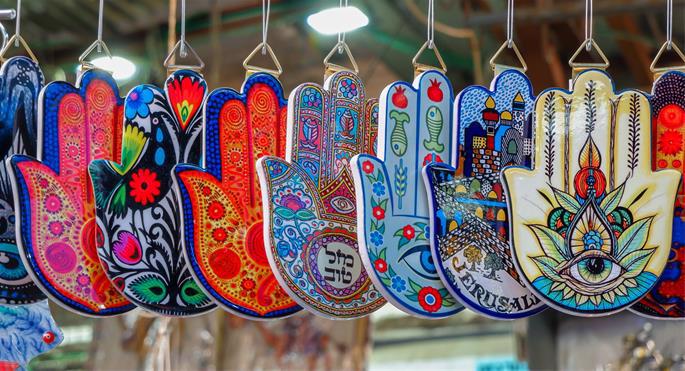A Hamsa is an amulet that depicts a symmetrical open hand, typically used decoratively in the home or worn on jewelry. Its name—Arabic for “five”—is representative of the five fingers of the hand and the protective qualities associated with that number. While designs vary, it is common for there to be a wide-open eye on the palm of the hand—symbolizing the desire to be shielded from the “evil eye.”
The Hamsa is widespread among Sephardic Jews, many of whom hail from Arabic lands. But it is also common among Muslims and Christians from those same lands. So can the Hamsa be considered a legitimately Jewish symbol, or is it something borrowed from non-Jewish neighbors, or even a holdover from idolatry which was once ubiquitous in those lands?
This question has been hotly debated, with great halachic authorities supporting various approaches.
Following the opinion that considers it foreign to the Jewish religion, many Jews refrain from using the Hamsa or hanging it in their homes.
However, many Sephardic rabbis taught that it was a legitimate Jewish symbol. Prime examples would be Rabbi Chayim Yosef David Azulai (Chida), as well as Rabbi Yosef Chaim of Baghdad (the Ben Ish Chai), who records the custom of hanging a small hand engraved with the Hebrew letter hei (which has the numerical value of five) to ward off the evil eye.1
So if this was the custom of your community, you may continue to use one with confidence. If you have no such custom, it would be wise to consult with your rabbi before purchasing that flashy little Hamsa charm.
Furthermore, it is important to keep in mind that the Talmud reassures us that the evil eye only affects you if you give it credence and if you worry about it; if you ignore it, the evil eye does not affect you at all.








Join the Discussion